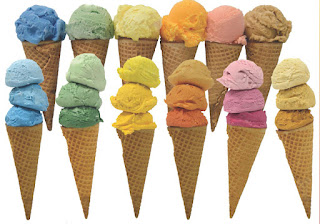Goats and camels watch out…now gorillas want part of the “other mammal” milk. That’s right, eco-friendly Gorilla Milk is nutritionally dense milk from western lowland gorillas. Marketed by Santa Monica, CA-based, Barnana, a pioneer in the healthy snack category, most notably those based on bananas—the Gorilla’s meal of choice—new Gorilla Milk is described as an alternative to cows milk that is more genetically similar to human milk.
The Fair Trade, Non-GMO Project Verified, organic, grass-fed milk from western lowland gorillas is also unpasteurized and raw. (I thought the two terms meant the same thing!) It comes in a pouch package, and though not confirmed, I am guessing it is refrigerated.
“After spending time with western lowland gorillas in Africa, seeing their wild habitat being destroyed and after having the privilege to milk one myself, I am excited to bring mother gorillas’ milk to market for human consumption and save the lives of gorillas and their wild habitat,” says Caue Suplicy, Barnana CEO. Sales of Gorilla Milk will directly benefit efforts to save and repopulate the wild habitat of the gorilla.
How do you milk a gorilla? Find out on March 12th by signing up HERE.
(Interested in colors harvested from nature? Attending Natural Products Expo West? Visit DDW-The Color House at booth 685 in the Engredia Hall A.)
Now that I have your attention, here’s the deal. This product, as well as thousands of others described using similar “all-natural, ecofriendly” jargon will be showcased at Expo West, which promises to be the largest one to date. The natural products industry continues to grow year after year, as consumer demand for such products intensifies.
Among the contributing factors to Big Food’s current dilemma is consumers’ increasing demand for purity in their foods and beverages. Consumers are avoiding adulterated elements and looking for natural and fresh foods and beverages at grocery stores, and avoiding the processed foods on which many major food companies base their business.
“The bottom line is that major food companies and retailers are faced with meeting changing consumer needs with processes and infrastructure that were built for the mass-produced foods consumers craved a decade ago,” says David Portalatin, vice president-food industry analyst at NPD.
“The U.S. consumer has changed,” writes my Food Business News colleague Keith Nunes in an article with this title. He references a report published by the consultancy Deloitte Consulting L.L.P., which is based on a study conducted with the Food Marketing Institute and the Grocery Manufacturers Association. The study states that new purchasing influences, such as health and wellness, safety, social impact, experience and transparency, are motivating consumers and forcing food and beverage manufacturers and marketers to adapt.
“The U.S. consumer has changed in a fundamental and impactful way, and people’s preferences are becoming even more fragmented than the food industry may have anticipated,” said Jack Ringquist, a principal with Deloitte.
As a result of the emerging purchasing influences, the report predicts consumer tastes and preferences will continue to fragment, the retailer’s role in influencing purchases will continue to grow, smaller and newer companies will remain competitive—such as those exhibiting at Expo West--as they leverage new technologies to earn consumer trust, and market success will be determined by those companies that can build purpose-driven competitive advantages.
The accompanying infographic shows the top-five attributes that the 5,000 U.S. consumers surveyed ranked in terms of importance. (More than one attribute could be selected.) Number-one was free of harmful elements (62%). This was followed by clear and accurate labeling (51%), clear information (47%), fewer ingredients (42%) and nutritional content (41%).
To read the entire Food Business News article, link HERE.
This week I wrote an article on coloring beverages for Food Business News. It will be published in a week. I found this bit of research interesting: Consumers are not evaluating every component of a product individually. Rather, they use a method of elimination whereby they scan the label for certain ingredients that they personally avoid. If they discover them among the contents, the product is returned to shelf. For many, artificial color is the deal breaker.
It’s no wonder every week another Big Food company announces its commitment to eliminate artificial colors from product formulations. But converting from artificial to natural colors comes with challenges.
If you are in the ice cream business, plan to attend the International Dairy Foods Association’s Ice Cream Technology Conference this April 12 to 13 in Bonita Springs, FL. You will be able to hear Jody Renner-Nantz, senior application scientist at DDW-The Color House speak about new technologies for more stable colorants and the various hurdles to consider when selecting colorful ingredients.
For more information on the conference, link HERE.





No comments:
Post a Comment